What is a Hate Crime?

In this lesson, students learn the definition of “hate” and how to use alternate words, discover and understand how national laws are made and apply that understanding to the concept of government protection.

Instructional Resources for California Educators, Students, & Families

In this lesson, students learn the definition of “hate” and how to use alternate words, discover and understand how national laws are made and apply that understanding to the concept of government protection.
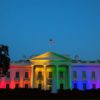
On June 26, 2015, in a 5-4 decision the Supreme Court of the United States held that the 14th Amendment requires a state to license a marriage between two people of the same sex and to recognize marriages lawfully performed in other jurisdictions. This means that marriage equality is now the law of the land in all 50 states. Prior to this historic day, 37 states plus the District of Columbia had legalized marriage for same-sex couples. This lesson provides an opportunity for students to explore marriage equality, gain background information about it, and reflect on their own thoughts and feelings about marriage equality.
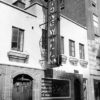
This lesson plan explores the history of LGBTQ Liberation from 1959 - 1979, and is a companion to the exhibit "Stonewall 50: The Spark That Lit the Flame" from the Center on Colfax's Colorado LGBTQ History Project. It includes primary sources and panels from the exhibit designed to weave together, in cooperative small-group learning, the narrative of Stonewall with the LGBTQ history of Denver. Students will use primary sources not widely available, and will understand the context leading up to Stonewall and the changes which occurred there after. From the Mattachine Society, the Black Cat Tavern and Compton's Cafeteria Riot, to the Denver Gay Revolt, Harvey Milk, as well as a detailed timeline of the riots, and the diverse voices there-in. Your students will be among the first generation of Americans to know and tell these stories. Their words will shape the future and change the world. (Includes: Bibliography, Teacher Resources, Understanding By Design, Colorado Content Standards Aligned, Grades 8-12). During this lesson students will answer a question open to historical debate "Why were the Stonewall riots the moment that sparked the LGBTQ Liberation Movement in American History?" Students will then be given panels from the Stonewall 50 history exhibit talking about the history of Stonewall: the events leading up to Stonewall, the events of the riots themselves, and the events and organizations that developed after the riots, such as the Gay Activist Alliance (GAA) and Gay Liberation Front (GLF), as well as the first Denver LGBTQ pride event, and the National March on Washington for Gay & Lesbian Rights in 1979. Students will be given 15 minutes to read panels from the exhibit underlining the important names, dates and events. Students will then share what they learned. Students will then create their own posters outlining the events of the riots as a formative assessment.
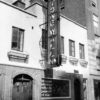
In the early hours of June 28, 1969, a police raid of the Stonewall Inn exploded into a riot when patrons of the LGBT bar resisted arrest and clashed with police. The Stonewall Riots are widely considered to be the start of the LGBT rights movement in the United States. In this lesson, students analyze four documents to answer the question: What caused the Stonewall Riots?
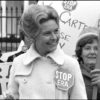
In this lesson, students will learn about changes and continuities in the 1920s, particularly focused on cultural and social areas. Students will analyze primary and secondary sources that explore race, gender, and sexuality in the 1920s.
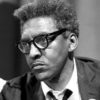
In this lesson, students will examine primary sources to understand how Bayard Rustin’s identity shaped and influenced his actions as a Civil Rights leaders. They will participate in whole group discussions and small group work to deepen their knowledge on who Bayard Rustin is and how his identity as a gay man affected his life as an advocate. They will demonstrate their learning by writing an argumentative essay answering the inquiry question.
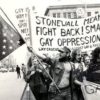
In this lesson, teachers will contextualize the LGBT rights movement by answering the question introduced in the History-Social Science Framework for California Public Schools: “How did various movements for equality build upon one another?” While activists fighting for LGBT rights utilized similar tactics and had some shared goals of those fighting for Civil Rights broadly, LGBT people in racial minority communities faced additional discrimination. Moreover, many fighting for broader Civil Rights did not consider sexual preference or gender identity as apart of their fight. In this lesson, students will explore historical perspectives to determine to what extent the movement for LGBT rights was or was not part of the broader movement for Civil Rights of the 1970s and 1980s. Students will read, annotate and categorize several primary sources to write a short essay describing and supporting their prospective with evidence from the texts.

How did the black civil rights movement influence other activist movements of the late 1960s and 1970s?